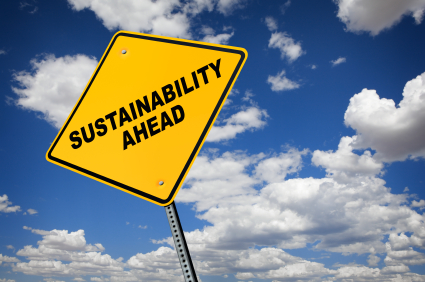Small farmers and hobby farm owners consistently rate sustainability of their property as one of the most important factors to consider. 'Sustainability' is a term that tends to be used loosely. It can mean very different things to different people.
What is sustainability in farming?
For some small farm owners, it may simply mean having the opportunity to become more connected with nature. Having sufficient area for a large vegetable garden and a few acres to rear and care for a few farm animals is a pleasure denied to most Australians, given our predominantly urban lifestyle.
For others, it can mean much more, giving them an opportunity to live a lifestyle that reflects their beliefs and attitudes. This might include having the opportunity to choose the type of house they live in, how they use energy, water and other resources, what food they grow, what fertilisers and pest control inputs are used, how they treat animals reared for food and how they interact with and impact on the immediate environment around them. It can also give them an opportunity to be in control of how they make a living and connect with a community.
 |
Sustainability – a definition
There are varying definitions for sustainability, and most include elements of the environment, economy and society. One of the best definitions I've encountered is also one of the simplest:
'Sustainability is the capacity to endure; economically, socially, and environmentally.'
This definition makes is apparent that sustainability is not just about the environment, it is also about people and money. It also implies that to be sustainable the effects must be long term, which I believe should be taken to mean being capable of lasting at least from one generation to the next.
The definition further implies that if something is environmentally favourable but not economically feasible or socially acceptable, then it cannot really claim to be sustainable.
Limitations to farm sustainability in Australia
Before you decide to embrace small farm sustainability 'boots and all', it is important to have a good awareness of factors that are arguably unique to Australia, which are likely to impact on your efforts.
Australia is incredibly vast in size, traversing several time zones and distinctly different climatic areas. It encompasses several different landscapes varying from tropical rainforest to extremely dry desert with the vast majority of land being of the semi-arid 'outback' type. Within these landscapes, extremes of weather are common, both in temperature and rainfall. Long periods of drought, with the possibility of occasional but extensive flooding, are an expected norm in many localities.
Geologically, Australia is earth's oldest continent and as such has some of the world’s poorest soils in terms of fertility. Alternative farming methods that rely on 'activating' or 'releasing' nutrients in such situations are likely to have poor prospects for success.
Ecosystems that have evolved in Australia's landscapes are often fragile and vulnerable to damage from farming activities, conventional or otherwise. Unfortunately, historically, our farming track record has not been good in this respect.
Australia also has unique characteristics when it comes to its population distribution. Almost 90% of Australia's population is urbanised with over 80% living in just one percent of the continent's area. Of this, the vast majority lies within the coastal strip stretching between Brisbane and Adelaide. Around 80% of the continent contains just 3% of our population. This has obvious implications to the distances required for small farms to access markets and services and therefore to decisions regarding where to live and farm.
Taking information on sustainable farming practices from other countries and applying them without first considering Australia's own special characteristics and needs could lead to a lot of costly mistakes and disappointment.
Traditional versus alternative farming
Traditionally, alternative farming practices such as organic, biological, biodynamic and permaculture have been associated with sustainability, probably because these are regarded as being more environmentally friendly than conventional modern farming practices. While this might often be the case, remember that these activities must also be economically and socially acceptable – and enduring. In some situations this might be difficult using just alternative farming methods; it could well be that an integrated approach harnessing both conventional and alternative farming aspects result in more sustainable results.
In future articles I intend to explore the basis to many of these alternative types of farming as well as look at other opportunities for small farm sustainability. These may include developments in renewable energy, water, soil, land care and native habitat conservation techniques, alternative building materials and so on. I will also examine and discuss possible income opportunities that fall within the sustainability paradigm, including those of carbon farming, small farm supplier co-operatives, supplying farmer markets, and engaging the local community through buying and selling locally.
 |
The author, Roger Martyn has spent 20 plus years working in agriculture and horticulture since graduating from Massey University with an Agricultural Science degree. He has helped many farmers improve their farm productivity and profitability as well as often increasing the enjoyment they got out of farming. |



